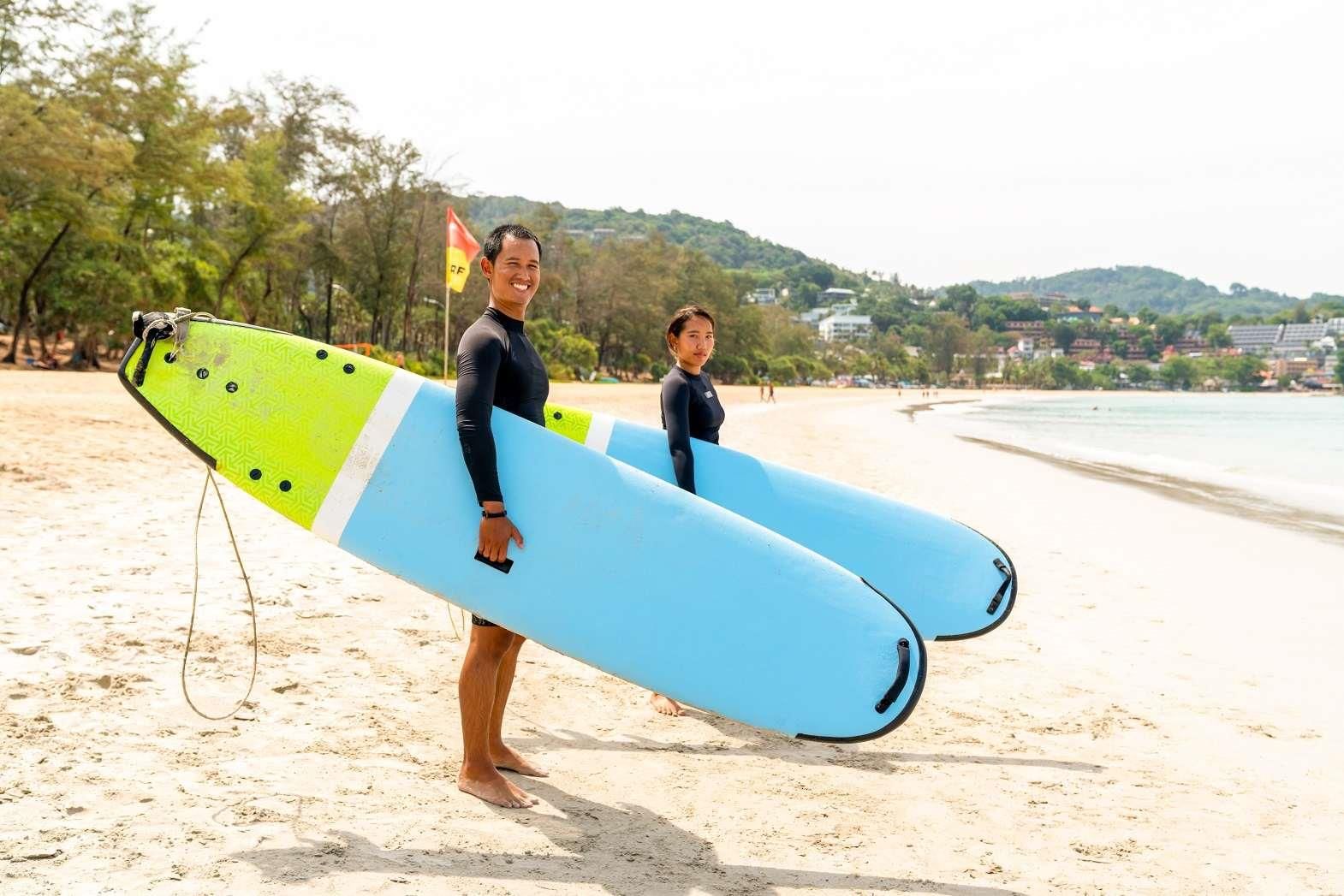Today, there are many people buying into the surfing lifestyle, even at places where there is no ocean. The surfwear industry by itself churns out sales worth more than $13 billion every year. What's more, out of the population purchasing surfing clothes, only half indulge in the sport actively. The rest are just getting wooed by what the brands make and are lured by the image and the lifestyle the surfers portray. Moreover, the popularity of long surfing boards makes learning the sport easy, and the growth of surf schools has given an impetus to the "cool" quotient, thereby pulling a large number of youths into the culture.
The staple garment and any surfing fanatic's essential is the wetsuit. It is a body-hugging outfit made up of a stretchy and rubbery synthetic pioneered by DuPont called neoprene. The wetsuit basically works on the idea that the wearer does not need to stay dry to stay warm. Another popular surfwear product is the board shorts, a swimwear product worn in warmer conditions. Technically, board shorts are long and loose-styled shorts, generally made up of materials like nylon or polyester for quick drying.
But the comfort and cool style of board shorts have found fashion fixation among communities outside the surfing enthusiasts too. Board shorts, from time to time in different colors and prints, have become a beach essential in the fashion world. The rise in the number of female surfers has given rise to surfing-inspired fashion, which includes bikinis, swimsuits, shorts, t-shirts, short onesies, and vests made up of waterproof fabrics like polyester.
Surfing-inspired collections have been seen in the past in resort runway shows of fashion designers. Tie and dye shirts, dresses, ombre t-shirts, and board shorts have been all-time favorites among teenagers. The spring-summer collections of 2014 from Mara Hoffman, Cynthia Rowley, J.Crew, and Zara showcased floral boxy crop tops, dresses, and pants along with multi-colored baggy tops and tea-length skirts.
Major brands dominating the surfwear and surf-inspired clothing market are Billabong, O'Neill, Quiksilver, Roxy, and Rip Curl. According to the Global Industry Analyst, the market for surf clothing will reach $13.2 billion by 2017. The makers of surfing equipment, the marketers, and surfing associations are trying to make the sport more approachable and are trying to roll out facilities to surf around the globe and also develop artificial surf turfs. With such expansions planned, the need and popularity of surfwear and surf-inspired fashion are bound to grow.
Until now, the target market and consumers of such garments were teenagers and people in their early twenties. But surfwear companies are now targeting young women and older markets; however, the demographics still are predominantly occupied by the former. The increase in the number of spectators of the sport and the telecast of surfing events on prime channels have also led to the popularity of the trend of surf-inspired clothing.
Although the market for surf wear is growing, the industry faces fluctuating demands, which are seasonal and driven by trends. Besides this, other aspects affecting the surf wear are the consumer demographics, economic conditions, and levels of disposable incomes. The economic slump had broken the wave of sales since employment rates were falling, incomes were reducing, and the plummeting per capita expenses left very little for individuals to leisure travel and such adventure sports.
But with a lot fast fashion brands like Zara, H&M, Abercrombie & Fitch, Top shop, and ASOS targeting the same demographics are making surf wear brands a run for their money. Majority of these apparel retailers especially Topshop, Zara, and H&M are extensively trying to reach out to the 14 to 24 year old market. The true blue surfing brands like Quicksilver, Rip Curl, and Billabong are falling weak in the times of competition and do not have the strength to hold consumers like they used to in the early years of 2000.
But the love and passion for the sport however remain intact and still surfing pulls a large amount of young crowd and so does surfing inspired garments and fashion. The U.S and Europe are the two biggies that hold the major market share of the global surfing market. Recognizing the potential in the surfing apparel market many brands and designers are exploring the idea of creating a clothing collection inspired by the sports culture to attract young consumers. The concept of making sportswear dynamic yet fashionable is growing as apparel makers realize the opportunities in such spaces.
References:
1. Researchandmarkets.com
2. Prweb.com
3. Businessoffashion.com
4. Teenvogue.com








Comments